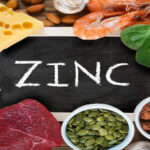Ø Plastic recycling refers to the process of recovering waste or scrap plastic and reprocessing the materials into functional and useful products. This activity is known as the plastic recycling process. The goal of recycling plastic is to reduce high rates of plastic pollution while putting less pressure on virgin materials to produce brand new plastic products. This approach helps to conserve resources and diverts plastics from landfills or unintended destinations such as oceans.
Ø Plastics are durable, lightweight and inexpensive materials. They can readily be molded into various products which find uses in a plethora of applications. Every year, more than 420 million tons of plastics are manufactured across the globe. Consequently, the reuse, recovery and the recycling of plastics are extremely important.
Ø What Plastics Are Recyclable?
There are six common types of plastics. Following are some typical products you will find for each of plastic:
- PS (Polystyrene)– Example: foam hot drink cups, plastic cutlery, containers, and yogurt.
- PP (Polypropylene) – Example: lunch boxes, take-out food containers, ice cream containers.
- LDPE (Low-density polyethylene)– Example: garbage bins and bags.
- PVC (Plasticised Polyvinyl chloride or polyvinyl chloride)—Example: cordial, juice or squeeze bottles.
- HDPE (High-density polyethylene)– Example: shampoo containers or milk bottles.
- PET (Polyethylene terephthalate)– Example: fruit juice and soft drink bottles.
Ø The Plastic Recycling Process: www.gmrecycler.com
The simplest of plastic recycling processes involves collecting, sorting, shredding, washing, melting, and pelletizing. The actual particular processes vary based on plastic resin or type of plastic product.
Most plastic recycling facilities use the following two-step process:
Step One: Sorting plastics automatically or with a manual sort to make sure all the contaminants are removed from the plastic waste stream.
Step Two: Melting down plastics directly into a new shape or shredding into flakes then melting down before being finally processed into granulates.




































